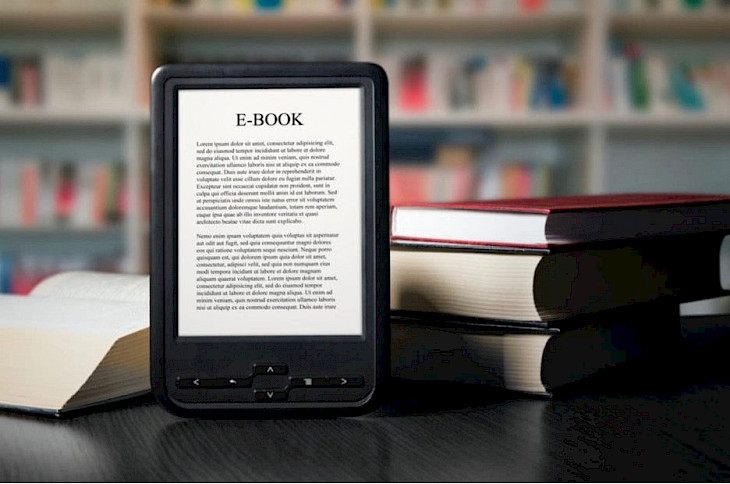
As our preference for digital products increases, everyday items like books and board games now have digital versions. And at first, it seemed like they’d be mere additions to the real deal — fun accessories — and nothing more.
But with professional academic paper writing services like EssayService and other online writing tools for students becoming more prevalent, there’s a real chance that eTextbooks will phase out printed ones.
This article will benefit everyone curious about the differences between eTextbooks and print textbooks.
Convenience
With everyone having at least one digital device in their pockets, there’s a higher chance that we will want a way to read without carrying extra weight. And since eTextbooks are optimized for mobile devices, you don’t need to carry your laptop.
You can read on the train, on the bus, in bed, and even while walking — things you can’t comfortably do with a 2-pound book. This convenience appeals to many students, especially those who travel a long way to school.
Also, certain apps let you store virtually unlimited eTextbooks on your phone and pick up from where you stopped reading in a few seconds, which is impossible with print textbooks. So, when it comes to convenience, eTextbooks are miles ahead.
Sentimentality
Some people just can’t handle the flat design and experience of reading a textbook from a digital screen. There will always be that nostalgic feeling of flipping through pages, smelling the musk of a textbook when you open it for the first time, and folding a page to mark where you stopped reading.
Some ebook readers are trying to recreate these feelings. They’re adding papyrus themes and features that let you continue reading without remembering the page you stopped on.
But, until they can conjure the unique scent of almond with a hint of vanilla in the autumn whenever you open an eTextbook, printed books will continue to steal wistful readers away.
Potential for Distractions
If you prefer reading for long without breaking your flow, you’re better off buying printed textbooks. Since eTextbooks are available on the same phones, tablets, and laptops as our social apps, the potential for distraction when reading them is higher.
Unlike with a printed textbook, you can’t decide to put away your phone to concentrate while reading. The moment a notification pops up, your concentration breaks. And though you can put your phone on DND (Do Not Disturb) mode, you still contend with other potential distractions like games.
Pricing
Unless you prefer buying hand-me-down textbooks, eTextbooks are generally cheaper. You can even download some eTextbooks for free, saving money that can come in handy in other areas like paying for a write my essay for me service. And if you use an Android device, you can always send these digital textbooks from your friend’s phone to yours.
Printed textbooks can cost a lot, especially if you buy different volumes. But unless you buy a Kindle device, you’d be paying for more than the ability to read textbooks when buying your phone.
Consider everything else your device can do, and it becomes evident that you’ll be getting more value for your money.
Social Factor
You can share your eTextbooks and study with friends irrespective of distance. You can’t get this feature with print textbooks without needing multiple copies. And even if you decide to photocopy the textbook sections you need, you’ll spend money on it — not to mention that it is unacceptable in most places.
You can quickly send a digital file like an eTextbook to a classmate with your phone. Some tools even let you collaborate on those documents, helping you create social connections while studying.
So unlike decades ago, when you’re often shut off from others whenever you’re buried in your books, you can now study and remain socially accessible.
Resale Value
As a student, most eTextbooks you buy have no resale value — at least not to you. You can’t sell an ebook to your friend after you read it. That’s piracy, which is illegal. Once you pay for an eTextbook, you know that that’s money you’ll never get back, so you would expect the purchase to be worth it.
On the other hand, students sell rare textbooks to make money without putting any funds into the trade. You can argue that business strategies don’t get much better than that.
But if you are looking for a direct financial return on your investment, you’re better off buying a printed textbook. Even if you sell it on the used market for less than you bought it, you’d still have some money back in your pocket while getting the value of reading the textbook.
Accessibility
Accessibility is one of the most evident differences between eTextbooks and print textbooks. With online stores and sites at your fingertips, you can quickly find, download, or buy any eTextbook you need.
But it’s often a different case with print textbooks. Students can’t walk into a random physical store and pick the textbook they want. They often have to wait for it to be available in their school library or go from one physical bookstore to the other, hoping they find what they need.
Conclusion
Knowing the differences between eTextbooks and printed ones should clear your curiosity. As you can see, each has its perks and drawbacks.
If you want to get lost in the imaginative tendrils of a book while reading, the nostalgic feeling of print textbooks will satisfy you. But if you prefer accessibility and convenience, you’re better off with eTextbooks.





